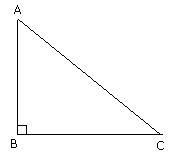Ask questions which are clear, concise and easy to understand.
Ask QuestionPosted by Sudha Bhardwaj 3 years, 11 months ago
- 1 answers
Posted by Drashti Ahire 3 years, 11 months ago
- 0 answers
Posted by Rajat Agarwal Agarwal 3 years, 11 months ago
- 1 answers
Gaurav Seth 3 years, 11 months ago
8. Praveen wanted to make a temporary shelter for her car, by making a box – like structure with tarpaulin that covers all the four sides and the top of the car (with the front face as a flap which can be rolled up). Assuming that the stitching margins are very small, and therefore negligible, how much tarpaulin would be required to make the shelter of height 2.5m, with base dimensions 4m×3m?
Solution:
Let l, b and h be the length, breadth and height of the shelter.
Given:
l = 4m
b = 3m
h = 2.5m
Tarpaulin will be required for the top and four wall sides of the shelter.
Using formula, Area of tarpaulin required = 2(lh+bh)+lb
On putting the values of l, b and h, we get
= [2(4×2.5+3×2.5)+4×3] m2
= [2(10+7.5)+12]m2
= 47m2
Therefore, 47 m2 tarpaulin will be required.
Posted by Anmol Singh Gill 3 years, 11 months ago
- 3 answers
Maheshwari N C Chandra Babu N A 3 years, 11 months ago
Gaurav Seth 3 years, 11 months ago
To solve for distance use the formula for distance d = st, or distance equals speed times time. Rate and speed are similar since they both represent some distance per unit time like miles per hour or kilometers per hour. If rate r is the same as speed s, r = s = d/t.
Posted by Shiv Pratap Gupta 3 years, 11 months ago
- 1 answers
Gaurav Seth 3 years, 11 months ago
a² - 3a - 1 = 0
=> a² - 1 = 3a
From the given equation divide by a from both side.
a² - 1 = 3a
=> (a² - 1 ) / a = 3a / a
=> a - 1/a = 3
We know,
( a - 1/a)² = a² + 1/a² - 2 { where a ≠ 0}
=> (a - 1/a)² + 2 = a² + 1/a²
=> 3² + 2 = a² + 1/a² { since, (a - 1/a)² = 3) }
=> 9 + 2 = a² + 1/a²
=> 11 = a² + 1/a²
Posted by Janu Bhuya 3 years, 11 months ago
- 0 answers
Posted by Janu Bhuya 3 years, 11 months ago
- 1 answers
Posted by Janu Bhuya 3 years, 11 months ago
- 1 answers
Posted by Janu Bhuya 3 years, 11 months ago
- 1 answers
Posted by Swati Bhanja 3 years, 11 months ago
- 1 answers
Posted by Cartoonz Mania 3 years, 11 months ago
- 0 answers
Posted by Chunna Bhokta 3 years, 11 months ago
- 3 answers
Gaurav Seth 3 years, 11 months ago
Let us consider that 2 distinct circles intersect at more than 2 points.
∴These points are non-collinear points.
As 3 non-collinear points determine one and only one circle
∴There should be only one circle.
(i.e. those circles are supposed to superimpose each other)
But, the superimposition of 2 circles of different radii is impossible, i.e. concentric circles would be derived instead.
This contradicts our assumption. Therefore, our assumption is wrong.
Hence, 2 circles cannot intersect each other at more than 2 points.
Posted by Tinesh Nag 3 years, 11 months ago
- 1 answers
Posted by Alan Krishna 3 years, 11 months ago
- 1 answers
Posted by Shekhar Kumar 3 years, 11 months ago
- 1 answers
Yogita Ingle 3 years, 11 months ago
The rational number 7/75
The denominator = 75=3×25=3×52×20
Hence the denominator cannot be written in form 2m. 5n. So it is non-terminating repeating decimal expansion.
Posted by Merina Tuzzahan 3 years, 11 months ago
- 4 answers
Merina Tuzzahan 3 years, 10 months ago
Ayushmaan Singh 3 years, 11 months ago
Yogita Ingle 3 years, 11 months ago

Let L is a line And A is a point not on the line L.
Now draw AC perpendicular to L.
Again let D is a point on L other than C.
Now in triangle ACD
∠C = 90
Since ∠A + ∠C + ∠D = 180
=> ∠A + ∠D = 180 - ∠C
=> ∠A + ∠D = 180 - 90
=> ∠A + ∠D = 90
So ∠D is an acute angle.
So ∠C > ∠D
=> AD > AC (since opposite to greater angle is greater)
=> AC < AD
So all line segments drawn from a given point not on it, the perpendicular line segment is the shortest.
Posted by Sujata Thipse 3 years, 11 months ago
- 2 answers
Sunaada Acharya 3 years, 11 months ago
Gaurav Seth 3 years, 11 months ago
Let their salaries/income be 9x and 7x
let their expenditure be 4y and 3y
so,
ATQ
9x-4y=200—(1)
7x-3y=200—(2)
so,
from (1)
x=(200+4y)/9—(3)
put x in (2)
7[(200+4y)/9]-3y=200
(1400+28y)/9-3y=200
(1400+28y-27y)/9=200
y+1400=1800
y=400
now put y in (3)
x=(200+4×400)/9
x=(200+1600)/9
x=1800/9
x=200
so,
salary of first person=9×200=1800 rs
salary of second person=7×200=1400 rs
Posted by ? ? 3 years, 11 months ago
- 0 answers
Posted by Focus Pharma 3 years, 11 months ago
- 2 answers
? ? 3 years, 11 months ago
Posted by Sanjeev Chadha 3 years, 11 months ago
- 1 answers
Yashas Kumar 3 years, 11 months ago
Posted by Paramaditya Choudhary 3 years, 11 months ago
- 2 answers
Gaurav Seth 3 years, 11 months ago
by Pythagoras thereom:-
let 'a' be the height, 'b' be the base and 'c' be the hypontuse.
→ a² + b² = c²
→ a² + 8² = 10²
→ a² + 64 = 100
→ a² = 100 - 64
→ a² = 36
→ a = √36
→ a = 6cm
★VERIFICATION★
= 6² + 8²
= 36 + 64
= 100cm
hence verified
thus the height of the triangle is 6cm.
now,
area of the triangle = 1/2 × b × h
= 1/2 × 8 × 6
= 4 × 6
= 24cm²
hence, the correct option is (A) 24cm²
Or
The correct options is (a).
Posted by Ansh Patidar 3 years, 11 months ago
- 3 answers
Gaurav Seth 3 years, 11 months ago
<a href="https://owlcation.com/" phx-track-id="logo">
</header> <section> </section> <section> <article> <figure itemscope="" itemtype="http://schema.org/VideoObject">
</figure> <section itemprop="articleBody"> <header> <dl> <dd>JUL 24, 2020</dd> </dl>
Polynomial Rules: What Defines Polynomials?
<dl> <dd itemprop="author"><a href="https://owlcation.com/@melbel" phx-track-id="Author Name" rel="author">MELANIE</a></dd> </dl> </header> <section>Melanie has a BS in physical science and is in grad school for analytics and modeling. Her research is in computational chemistry.
<figure itemscope="" itemtype="http://schema.org/ImageObject"></figure> </section> </article> </section><a> </a>
</a>
<button></button>
Polynomial Rules
What are the rules for polynomials? The short answer is that polynomials cannot contain the following: division by a variable, negative exponents, fractional exponents, or radicals.
<aside> </aside>What is a polynomial?
A polynomial is an expression containing two or more algebraic terms. They are often the sum of several terms containing different powers (exponents) of variables.
There are some pretty cool things about polynomials. For example, if you add or subtract polynomials, you get another polynomial. If you multiply them, you get another polynomial.
Polynomials often represent a function. And if you graph a polynomial of a single variable, you'll get a nice, smooth, curvy line with continuity (no holes.)
What does 'polynomial' mean?
The "poly" in polynomial comes from Greek and means "multiple." "Nomial", also Greek, refers to terms, so polynomial means "multiple terms."
The elements of a polynomial
<figure itemscope="" itemtype="http://schema.org/ImageObject"></figure><a> </a>
</a>
<button></button>
A polynomial can contain variables, constants, coefficients, exponents, and operators.
Melanie Shebel
What Makes Up Polynomials
A polynomial is an algebraic expression made up of two or more terms. Polynomials are composed of some or all of the following:
- Variables - these are letters like x, y, and b
- Constants - these are numbers like 3, 5, 11. They are sometimes attached to variables, but can also be found on their own.
- Exponents - exponents are usually attached to variables, but can also be found with a constant. Examples of exponents include the 2 in 5² or the 3 in x³.
- Addition, subtraction, multiplication, and division - For example, you can have 2x (multiplication), 2x+5 (multiplication and addition), and x-7 (subtract.)
Rules: What ISN'T a Polynomial
There are a few rules as to what polynomials cannot contain:
Polynomials cannot contain division by a variable.
For example, 2y2+7x/4 is a polynomial, because 4 is not a variable. However, 2y2+7x/(1+x) is not a polynomial as it contains division by a variable.
Polynomials cannot contain negative exponents.
You cannot have 2y-2+7x-4. Negative exponents are a form of division by a variable (to make the negative exponent positive, you have to divide.) For example, x-3 is the same thing as 1/x3.
Polynomials cannot contain fractional exponents.
Terms containing fractional exponents (such as 3x+2y1/2-1) are not considered polynomials.
Polynomials cannot contain radicals.
For example, 2y2 +√3x + 4 is not a polynomial
Posted by Saksham Yadav 9Th -A. 21 3 years, 11 months ago
- 3 answers
Chaitanya Saini 3 years, 11 months ago
Gaurav Seth 3 years, 11 months ago
A rational number, in Mathematics, can be defined as any number which can be represented in the form of p/q where q ≠ 0. Also, we can say that any fraction fits under the category of rational numbers, where the denominator and numerator are integers and the denominator is not equal to zero. When the rational number (i.e., fraction) is divided, the result will be in decimal form, which may be either terminating decimal or the repeating decimal.
Yogita Ingle 3 years, 11 months ago
A rational number, in Mathematics, can be defined as any number which can be represented in the form of p/q where q ≠ 0. Also, we can say that any fraction fits under the category of rational numbers, where the denominator and numerator are integers and the denominator is not equal to zero. When the rational number (i.e., fraction) is divided, the result will be in decimal form, which may be either terminating decimal or the repeating decimal.
Posted by Manika Sangal 3 years, 11 months ago
- 2 answers
Sunaada Acharya 3 years, 11 months ago
Gaurav Seth 3 years, 11 months ago
Height of cylinder (h) = Length of cylindrical pipe = 28 m or 2800 cm [1 m = 100 cm] Diameter of circular end of pipe = 5 cm Let ‘r’ be the radius of circular end, then r = diameter/2 = 5/2 cm We know, Curved surface area of cylindrical pipe = 2πrh = 2 x 3.14 x 5/2 x 2800 = 44000 Therefore, the area of radiating surface is 44000 cm2.
Posted by Arnav Singh 3 years, 11 months ago
- 3 answers
Arpit Bareth 3 years, 11 months ago
Gaurav Seth 3 years, 11 months ago
Given :A right angledtriangle ABC,  B = 90o
B = 90o
To Prove:Hypotenuse AC in the longest side.
(i) AC > AB(ii)AC > BC
Proof: Now in  ABC
ABC
 ABC = 90o
ABC = 90o
But  CAB +
CAB +  BCA +
BCA + CBA = 180o
CBA = 180o

Thus  BCA < 90o and
BCA < 90o and  CAB < 90o
CAB < 90o

(Side opposite to greater angle is larger)
Thus AC is the longest sid
Yogita Ingle 3 years, 11 months ago

Given :A right angledtriangle ABC,  B = 90o
B = 90o
To Prove:Hypotenuse AC in the longest side.
(i) AC > AB(ii)AC > BC
Proof: Now in  ABC
ABC
 ABC = 90o
ABC = 90o
But  CAB +
CAB +  BCA +
BCA + CBA = 180o
CBA = 180o

Thus  BCA < 90o and
BCA < 90o and  CAB < 90o
CAB < 90o

(Side opposite to greater angle is larger)
Thus AC is the longest sid
Posted by Ravinder Singh 3 years, 11 months ago
- 1 answers
Posted by Parth Singal 3 years, 11 months ago
- 2 answers
Yogita Ingle 3 years, 11 months ago
Given,
AB is equal to the radius of the circle.
In △OAB,
OA=OB=AB= radius of the circle.
Thus, △OAB is an equilateral triangle.
∠AOC=60°
Also, ∠ACB=21∠AOB=21×60°=30°
ACBD is a cyclic quadrilateral,
∠ACB+∠ADB=180° ∣ Opposite angles of cyclic quadrilateral
⇒∠ADB=180°−30°=150°
Thus, angle subtend by the chord at a point on the minor arc and also at a point on the major arc are 150° and 30° respectively.
Gaurav Seth 3 years, 11 months ago
A chord of a circle is equal to the radius of the circle. Find the angle subtended by the chord at a point on the minor arc and also at a point on the major arc.
<hr />∵ OA = OB = AB I Given
∴ ∆OAB is equilateral.
∴ ∠AOB = 60°

| The angle subtended by an arc at the centre is double the angle subtended by it at any point on the remaining part of the circle.

Now, ∵ ADBC is a cyclic quadrilateral.
∴ ∠ADB + ∠ACB = 180°
| The sum of either pair of opposite angles of a cyclic quadrilateral is 180°
⇒ ∠ADB+ 30°= 180°
⇒ ∠ADB = 180° - 30°
⇒ ∠ADB = 150°.
Posted by Mayank Parashar 3 years, 11 months ago
- 1 answers
Gaurav Seth 3 years, 11 months ago
1. In Fig. 6.13, lines AB and CD intersect at O. If AOC +BOE = 70° and BOD = 40°, find BOE and reflex COE.

Solution:
From the diagram, we have
(AOC +BOE +COE) and (COE +BOD +BOE) forms a straight line.
So, AOC+BOE +COE = COE +BOD+BOE = 180°
Now, by putting the values of AOC+BOE = 70° and BOD = 40° we get
COE = 110° and
BOE = 30°
2. In Fig. 6.14, lines XY and MN intersect at O. If POY = 90° and a : b = 2 : 3, find c.

Solution:
We know that the sum of a linear pair is always equal to 180°
So,
POY +a +b = 180°
Putting the value of POY = 90° (as given in the question) we get,
a+b = 90°
Now, it is given that a : b = 2 : 3 so,
Let a be 2x and b be 3x
∴ 2x+3x = 90°
Solving this we get
5x = 90°
So, x = 18°
∴ a = 2×18° = 36°
Similarly, b can be calculated and the value will be
b = 3×18° = 54°
From the diagram, b+c also forms a straight angle so,
b+c = 180°
c+54° = 180°
∴ c = 126°
Posted by Ritu Sharma 3 years, 11 months ago
- 1 answers
Gaurav Seth 3 years, 11 months ago
(i) 30°
Construction Procedure:
1. Draw a ray OA
2. Take O as a centre with any radius, draw an arc BC which cuts OA at B.
3. With B and C as centres, draw two arcs which intersect each other at the point E and the perpendicular bisector is drawn.
4. Thus, ∠EOA is the required angle making 30° with OA.


Construction Procedure:
1. Draw an angle ∠POA = 90°
2. Take O as a centre with any radius, draw an arc BC which cuts OA at B and OP at Q
3. Now, draw the bisector from the point B and Q where it intersects at the point R such that it makes an angle ∠ROA = 45°.
4. Again, ∠ROA is bisected such that ∠TOA is formed which makes an angle of 22.5° with OA

(iii) 15°
Construction Procedure:
1. An angle ∠DOA = 60° is drawn.
2. Take O as centre with any radius, draw an arc BC which cuts OA at B and OD at C
3. Now, draw the bisector from the point B and C where it intersects at the point E such that it makes an angle ∠EOA = 30°.
4. Again, ∠EOA is bisected such that ∠FOA is formed which makes an angle of 15° with OA.
5. Thus, ∠FOA is the required angle making 15° with OA.


myCBSEguide
Trusted by 1 Crore+ Students

Test Generator
Create papers online. It's FREE.

CUET Mock Tests
75,000+ questions to practice only on myCBSEguide app
 myCBSEguide
myCBSEguide

K Keerthana Reddy 3 years, 11 months ago
0Thank You